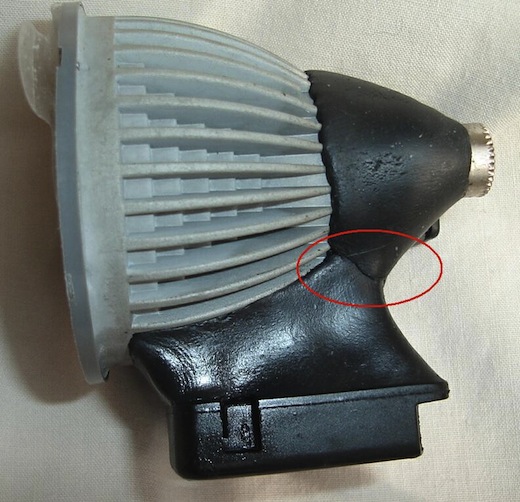Soft raw materials
A UK postdoc came to our lab in the US and was surprised that we didn’t have any Blu-Tack in the lab. His old lab wasn’t the only UK lab that goes through Blu-Tack (pictured in the EM image above) at an alarming rate. It’s very useful stuff. It is a tacky, moldable putty that stays flexible. We use it to hold small parts in place, at arbitrary angles. It’s similar to tacky putties made by several other companies, including Elmer’s in the US. It’s often sold to hold up posters on walls without marking the wall.
Here are some other soft materials that you might find useful.
Sugru
Sugru is a very interesting compound. It comes as a powder that can be hydrated into a putty and formed. When it polymerizes, it forms a strong rubbery substance. To get some ideas on possible applications, see their extensive gallery.
Sylgard
Sylgard (PDMS) is a classic compound. It’s a bit like Sugru, in that it is rubbery, but comes in two liquid parts that are mixed and cast, then left at room temperature to cure. It’s clear, and can form a waterproof seal. This is a common way to make custom chambers for electrophysiology rigs. It is also used as a soft layer in MEMS devices, microfluidics, and other micromanufactured devices. It is very homogeneous and can maintain high resolution, small structures.
Fimo
This is a modeling clay that, once baked, can be polished, drilled, tapped, etc. As you can imagine, it’s not terribly strong, but its machinability makes it unique among soft materials.
Milliput
The standard black variety is an epoxy clay that can be machined once it sets. This material will also hold threads, like Fimo, but it is strongly adhesive. Here is a nice walkthrough example that gives you some idea of what its like to work with the material and what you can do. (more info, half way down the page)



[…] interesting materials mentioned on Labrigger: Soft raw materials (Sugru, Sylgard, etc.) DIY […]